Nature's Web: Chapter 2, Part 1
Nature’s Great Chain of Being and a Unifying Principle for Human Society
Welcome to the Birthing the Symbiotic Age Book!
NEW here? — please visit the TABLE OF CONTENTS FIRST and catch up!
You are in Chapter 2, Part 1, Nature’s Great Chain of Being and a Unifying Principle for Human Society.
Here are all Chapter 2 posts:
Chapter 2, Part 1 — Nature’s Great Chain of Being and a Unifying Principle for Human Society.
Chapter 2, Part 2 — Nature’s Web and True Freedom, and The Tyranny AND Liberation of the Mind
Chapter 2, Part 3 — Finding My Life’s Calling
Trying to figure out Where This is All Going? Read an overview of the Symbiotic Culture Strategy — embodying the Transcendent through the nodes of intersection within local, grassroots-empowered community networks.
Previously, at the end of Chapter 1, Part 4:
”Who am I, bound to the group, clan, or tribe to which I belong?….
The human world appears to be made up of many differentiated forms and tribes, and we identify with them, forgetting that underneath, we come from One Source; we are really One Humanity and One Family.
Are you ready to build a world that nurtures this diversity yet still unites people through the heart fellowship of Love and Service?
Yes, you may feel this universal dream and soul longing, calling us into a deeper relationship with the Creator of all — and this sweet harmony, ringing throughout creation, the mirror calling us into a relationship with each other.
Who Am I?
I Am You.”
Chapter 2: Nature’s Web - Part 1
Nature’s Great Chain of Being and a Unifying Principle for Human Society.
While my previous out-of-this-world experiences propelled me into an inter-connected, nonphysical luminous web, my growing love of nature brought me down to Earth.
I began to intuit how Nature’s Web “reflects” the luminous Transcendent “above,” and “within” our material reality.
Throughout my teenage years and into my twenties, I continued to have these non-ordinary experiences that revealed to me a Ground of Being architecture for life itself. I lived in two worlds, and my heart and mind sought to make sense of and integrate these experiences as I continued to appear normal on the outside.
Before I graduated from Monterey High School in 1976, I had a series of adventures in nature that further established a relationship that would lead me to my next level of understanding. During high school, I was fortunate to find a fellow outdoor adventurer in a friend who had also moved to Monterey from Virginia.
We were both attracted to activities in the wild that involved some degree of adventure and even danger that would catapult us outside of suburban culture and outside our comfort zones.
While still in high school, the two of us were invited to join a group of older students from the University of California Santa Cruz on a backpacking trip to the Sierra Nevada Mountains of California, carrying 60-pound packs on rugged, high-altitude mountain trails in the Palisade Glacier region.
Then, in the summer following high school, my friend and I got to experience more of the natural world working on a farm in eastern Oregon.
Talk about down-to-earth!
We would wake up each morning at 4 AM to move hand-line irrigation pipes, surrounded by curious cattle and hounded by swarms of mosquitoes. It gave me a taste of rural, small-town life and a direct experience of the symbiosis of connected Nature and the cycle of growing things on a farm.
My friend and I followed that up with climbing experiences, wall climbing in Yosemite Valley, and mountaineering in the Northwest, including Mount Rainier.
The following summer, I worked as a station guard and Hellitack firefighter at Challis National Forest in Idaho, sometimes rappelling down from a helicopter to fight a blaze, then hiking forty miles back to the station. In all these wilderness adventures, I came away in awe of Nature’s vastness and power that put our controlled and civilized world into perspective.
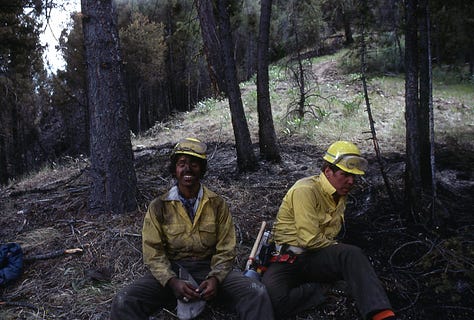
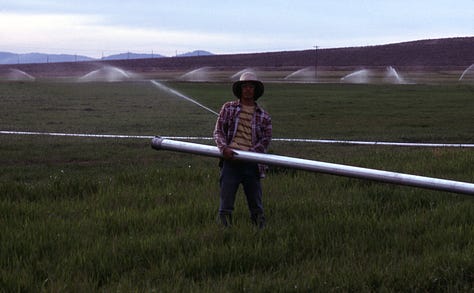
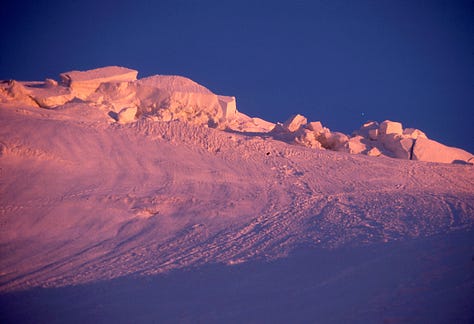
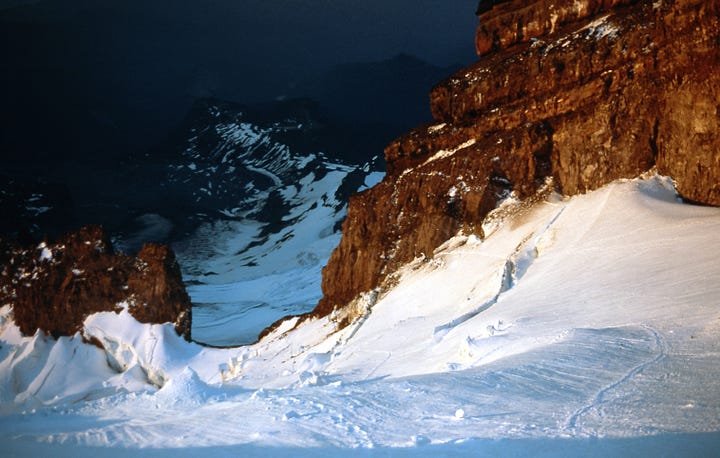

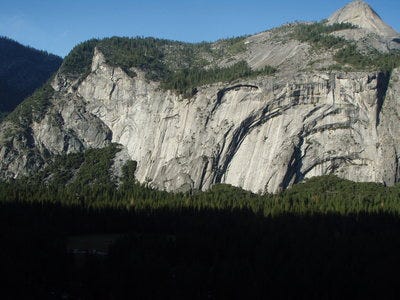
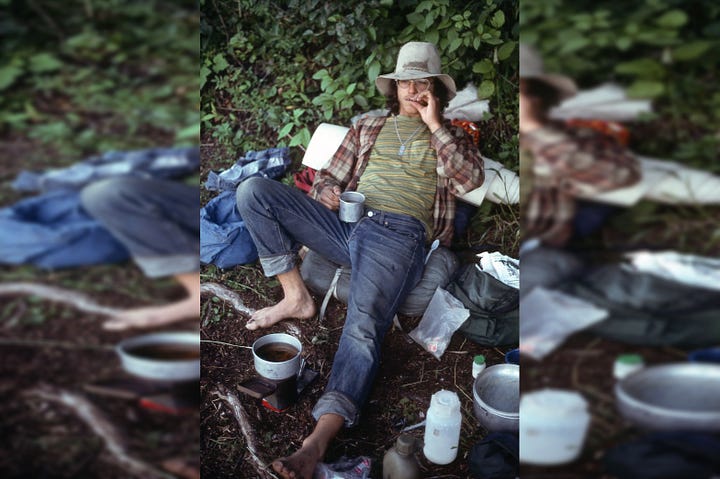
Throughout all these experiences, I was too occupied with the physical demands of climbing and firefighting to have much time for reflection. It wouldn’t be until I was in my early twenties that I began to recognize Nature as a teacher, a guide, and a way to see human society in a larger context.
These insights came from solitude in nature and burst forth in the form of poems, some of which I have already shared, that was more like automatic writing coming from a deep source within me (more about that later in this chapter).
Meanwhile, I started college at the University of California Santa Cruz with dreams of becoming an astrophysicist but discovered that high-level quadratic equations and the math I would have to master weren’t as exciting as those immersive natural experiences I had over the previous years.
Looking back, it’s no surprise that I reverted to my newfound love, biology. As a youngster, I imagined combining my love for the cosmos and the natural world by becoming an exo-biologist and exploring other worlds.
I had also become an admirer of Jane Goodall, the world-renowned primatologist, and was fascinated by animal intelligence and human/animal communication possibilities. That naturally sparked my interest in dolphins, pilot whales, and other marine mammals.
I spent the next several years researching pilot whales, and as part of that, I lived on Catalina Island, thirty miles off the coast of California, for three months immersing myself — literally — in their culture and society. I was also fascinated by how the pilot whales and dolphins lived in symbiotic cooperation.
The dolphins learned from the pilot whales and even adopted their hunting strategy, tagging along with them. Instead of fighting over territory and food, they cooperated as a larger community.
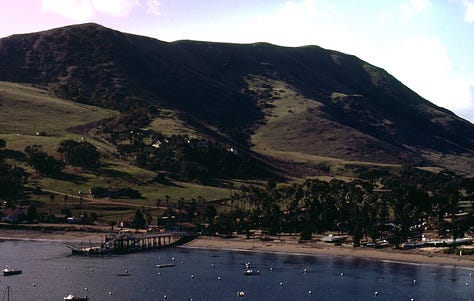
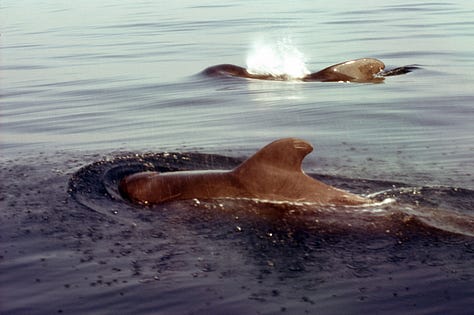
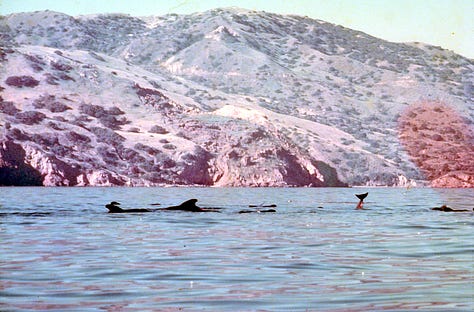
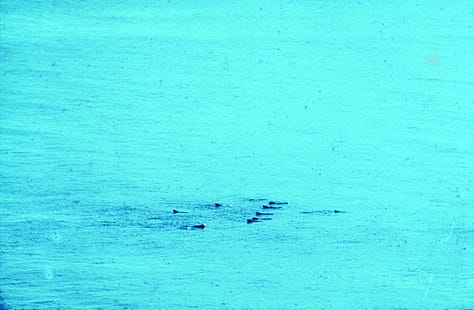

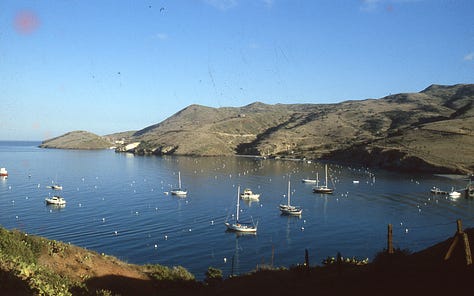
Of course, the natural world includes sharks, as well as dolphins, and predation is as natural as symbiotic cooperation. Still, I couldn’t help but wonder why human beings, with all their “superior intelligence,” fiercely competed against one another.
In 1981, I moved to San Diego to work on my master’s degree in biology, seeking to unravel the mystery of whale and dolphin communication. That’s when things became very interesting, and I began to have experiences that took me far beyond my academic studies.
As mentioned in the previous chapter, I kept my luminous experiences to myself. I didn’t confide in anyone — not my parents, not my friends, not a rabbi, priest, or other spiritual teacher, nor a wise elder. So, integrating and reconciling the dissonance between the two seemingly contradictory worlds of the Luminous Web and the twisted and tangled web of human society became an “inside” job.
In 1982, at the age of 23 years old, these internal churnings broke through, and I was inspired to write poetry that seemed to come from nowhere. I call it poetry, for lack of a better label.
This continued throughout the decade. Most of these first few writings came while I was outdoors in a natural setting. The first came when I visited my family home in Monterey, California, in Jacks Peak Park.
Nature’s Great Chain of Being
I walked alone in the pine forest on a bright, sunny, warm day. The rustling leaves, the fragrant air, and the subtle play of light and shadow created an ambiance of profound serenity and awe-inspired wonder.
I lay down on the ground to watch a slug eating a mushroom.
Suddenly, there was a flood of images, and the words came to me like dictation, and I hurriedly wrote them down on the spot. I would feel a wave of emotion and then hear the words start to come from within me, describing a direct experience of Nature’s Web.
I didn’t think about the words — instead, they came as a complete communication, a download of information that instantly made sense to me.
Little did I know that I would have many more of these over the next ten years and that it would take another few decades to understand them, fully feel them, and be able to translate them into a new way of living and building community.
It was these downloads, with specific messages, that would link my primary childhood spiritual experiences of the Transcendent Luminous Web, where reality is “everything connected to everything else,” to Nature’s Web, the interconnected symbiosis of Nature, and finally to my work as an adult building community-based symbiotic networks that “connected the good.”
Reflecting on the past, I realize that the design of the developing community networks, bridging separate silos, aligns with an age-old master plan – a profound underlying order reflecting the Transcendent/Logos itself.
The desire to “unite the cosmos in Love” can bridge the siloed fragmentation in communities.
Back to the slug — another important thing that happened to me as I lay on the ground watching it eat significantly informed my worldview. I realized that while there’s so much diversity in the forest, all the creatures are bound to each other, directly or indirectly, in the fabric of an extensive ecosystem.
I could relate to the slug, the mushroom, and the interconnectedness of the entire forest. Individually, each is both a part and a whole — simultaneously integral to the whole ecosystem, intermixing mutual goals of survival, growth, and thriving.
In the forest, I saw the next reflection of the Transcendent … all this diversity happening in rhythmic accord. The slug and mushroom are separate organisms that created a symbiotic relationship within the larger whole of the forest.
So, why is that important?
Because it shows us that we, too, can reiterate that pattern of cooperation and mutual benefit in our human relations.
I want to briefly introduce a concept I have found helpful in describing how Nature’s Web emerges from the Luminous Web: the “Holon.” Holons translates from the Greek as “part/wholes.”
It seems as if nature emerges from the Transcendent, “impregnated” Ground of Being, becoming self-organizing "holonic" structures, forming a grand hierarchy of existence that spans across various levels of beings, from the lower to the higher and vice versa.
You and I are like holons, part of that chain. We are bigger than our atoms, cells, and organs; we are smaller than our families, local communities, and the greater family of humanity, the planet, and the Universe. We are in a relationship with all the above, from the very smallest to the very largest.
Following up on the mushroom and slug story, a deeper way to understand the example of parts/wholes can be found in the connection between mushrooms/fungi and trees in a forest. A Smithsonian article, “Do Trees Talk to Each Other?” tells us:
“Scientists call these mycorrhizal networks. The fine, hairlike root tips of trees join together with microscopic fungal filaments to form the basic links of the network, which appears to operate as a symbiotic relationship between trees and fungi…. The fungi consume about 30 percent of the sugar that trees photosynthesize from sunlight. The sugar is what fuels the fungi, as they scavenge the soil for nitrogen, phosphorus, and other mineral nutrients, which are then absorbed and consumed by the trees.
To communicate through the network, trees send chemical, hormonal, and slow-pulsing electrical signals, which scientists are just beginning to decipher. Edward Farmer at the University of Lausanne in Switzerland has been studying the electrical pulses, and he has identified a voltage-based signaling system that appears strikingly similar to animal nervous systems (although he does not suggest that plants have neurons or brains). Alarm and distress appear to be the main topics of tree conversation. Some plants may also emit and detect sounds, and in particular, a crackling noise in the roots at a frequency of 220 hertz, inaudible to humans.”
This interconnection has self-organized over millions of years and is more commonly known as a “mycelial network.” The relationship between the fungi and trees has created a higher-order whole greater than the sum of its parts. The exchange of nutrient flow between the rhizomes and root systems drives greater complexity, thus creating a foundational element of Nature’s Web, a web of mutual functionality.
Self-organization is another concept that is important in biology, other sciences, and human society — the emergence of order in a system like a forest that results from the collective interactions of its individual components without external direction.
There is no boss in nature on top of the natural system telling the system to organize itself. Rather, the system behavior emerges from a more deeply patterned reality that creates this nested structure.
So here is the question.
What’s the deeper Reality that’s driving the system of creation, and how do humans fit in and connect to it?
Before I share my observation, I have to say that sometimes, I feel like I am myself a rhizome — an integral component of a mycelial network — being driven to connect silos within communities of human beings! I know many of you feel the same way, and I hope my experience encourages an exponential increase in this behavior.
Human societies organize similarly, like a forest, as an emergence of parts/wholes. Within cultures, the self-organization process shows up first as tribes, then there’s further development and specialization through silos as populations grow. Larger populations require more complexity in coordination and larger and larger institutional structures.
Looking back now, it makes sense why I have always focused on the challenge of tribalism, silos, and fragmented and disunited local communities and society, particularly as I recognized that human society doesn’t operate like the underlying ordering pattern of the Transcendent Logos or Nature’s Web.
Even though human culture follows the same mechanism of parts/wholes as the rest of nature, it has evolved to continually differentiate, fragment, and categorize society into silos to the point that we now need new forms of network coordination to reestablish mutual connection.
The boom-and-bust cycle of civilizations/empires (as classified by Arnold Toynbee and Oswald Spengler) — with rising and falling domination hierarchies and fragmentation based on power and control — is like a cultural mutation that served its purpose (the rise of individual “freedom,” individualism, economic marketplace, and modern networks) but has now become a global power trip and trap!
What is the connection between the Transcendent / Logos as a pattern and the hyper-polarized tribes and silos amongst humanity?
The dominion systems of mankind’s empires follow the age-old pattern of what Caesar called Divide et Impera — Divide and Rule. Today, all over the world, the global economic system, a “corporatism,” has aligned with national political elites, our new “oligarchs,” and we have been reduced to divided, atomized consumers focusing on the next pleasurable experience.
I believe this division has taken hold because we have lost the connection to the Transcendent, the fundamental pattern of the universe, our true anchor Reality, where the One and the Many are in harmony, and all the parts of the system mutually benefit.
Just like the mycelial network interconnecting entire forests for the benefit of all the species in the forest as part of a greater whole, the Logos ordering pattern has guided my own work in building community networks that connect across the silos of businesses, charities, and local government.
When we connect the Transcendent Logos described in Chapter 1 with the principle of connection found within Nature’s Web, we release and empower Cosmic Love as a driver of human connection and symbiotic network formation.
A Fundamental Unifying Principle for Human Society
As we said earlier, the Logos represents the highest, most transcendent ordering principle — known in the Old Testament as Wisdom, to both the Greeks and the early followers of Jesus. As both the “builder” and “sustainer” of reality, the Logos can be best expressed by Jesus’ “Great Commandment”: Love God and Love Others.
Love God, Love Others reflects the Ancient Blueprint within Reality that in the present time calls mankind to a New Creation in a new Beloved Community.
And, to transform society, this Commandment calls each of us to first heal our separation from the Transcendent Order, from Nature, and from each other.
The Culture of Separation would tempt us to turn away from the suffering of others or merely mitigate it without getting to the root. A new Culture of Connection would have us embrace the world's suffering, separation, and brokenness because — as St. Maximus said in the 7th century AD — we are called “to unite the cosmos in Love.”
Each of us can more fully embody “Love God, Love Others” in our families, neighborhoods, and local communities — reconnecting to the Transcendent Ground of Being, bringing Heaven to Earth.
As we “unite the cosmos in love” by connecting the silos of separation amongst the organizations and leaders within each local community, we can build a world based on Love and Wisdom, and each of us can participate in restoring Creation to its underlying pattern.
These concepts will be important later in the book in the practical conversation about how symbiotic networks were organized with the projects developed in San Diego and Reno.
What I was now discovering while in solitude in nature radically differed from my earlier nature adventures. Being in nature without the distractions of city life or other people allowed me to experience myself as part of something much larger. While in nature, I discovered something inescapable about the universal Ground of Being.
Nature’s Web is a direct expression —
a reflection of the Luminous Web.
I was experiencing being both a part and a whole
in the Great Chain of Being.
Here’s one of the poems that I wrote that captures the experience:
“I am alone in a snow-covered meadow
Just me and an occasional coyote, a few birds, numerous trees, and a few rocks.
I am alone but not afraid.
The strength that fills my soul comes from recognizing my authentic self here, as seen in an undistorted mirror.
I love the Earth, I love myself as part of Her, and I love all her marvelous life forms and all of her moods, violent and peaceful, and I can see now how creation is but a reflection, a mirror of a deeper underlying reality, Transcendent, that many call God.”
Often, while alone in nature, I found myself caught up in violent weather. It was as if I was a participant in a universe of motion, feeling the energy of nature not just on the outside but inside my very being.
Once, in the middle of a storm and shortly after, these words came to me:
“The center of the storm draws me near.
Undulating and swirling, its heart beats to the rhythm of this universe.
Can you see creation and destruction, life and death, light and darkness, and past, present, and future at the center, where peace lives and breathes?
I wander further into the heart of the storm …
Lightning, wind, hail, snow, and ice are so cold; they engulf me.
I cannot go further; if I do, I am lost, only to be overcome by the powerful forces.
This is the fate of most of us, lost in the world — lost in the fantasy world of our own heads.
We call this world real, not knowing the reason or purpose.”
This started a pattern within these downloads where I felt a deep connection to the Luminous Web and Nature’s Web, and that deepened my curiosity about why human society seemed so out of whack compared to what I was experiencing.
There seemed to be a precise way that this direct experience was unfolding and grounding me in a more conscious reality — that taught me about my place in the world and what was happening to humanity.
As I said in Chapter 1, my luminous experience set me apart from my peers and set me on a life course that has brought me to where I am today. Joseph Campbell famously called this quest, common to all cultures and all eras, the “hero’s journey.”
The Luminous Web and Logos was the revelation that called me forth to bring harmonious flow to human society. And — during a “dark night of soul” experience — it was the emergence of what felt like “living water,” real and metaphorical, like a cosmic roto-rooter that washed away the illusion of separation.
My whole body vibrates as I become immersed in your sweet harmony. The flow, the current, moves through me; every cell, every molecule, every atom in me is alive, conscious of life.
Like a stream moving slowly through a lush forest, this force is gentle, warm, and soothing.
Oh, the light illuminates my inner vision. Glowing clouds of purple, forming, then formless. Now, they dance as waves, like the motion of still water when a rock is thrown.
Waves from inside. The inner voices become one voice; the many notes become one liquid melody in tune with the song of the universe.
But there is only one voice, one chord in the depth of my soul.
I did not break through to the source of all things. The Voice of the Heart of Love came from inside me, and all was known.
It was as if I was aligning myself with a fundamental unifying principle, going from being pulled by the ego and the surface conditioning we’re all subject to, breaking through the veil, seeing beyond the multiplicity of forms and identities we have in the world, to the underlying Transcendent and the Great Chain of Being. That was such a key revelation for me.
More than a religious conversion, my real experiences allowed me to see beyond the confines of religion and non-religion that also went beyond belief or non-belief.
I am neither a theologian nor a philosopher, although I have read broadly and deeply to see how humans throughout history have sought to explain reality.
We've gotten hung up on our different worldviews, and as a result, we have not kept our eyes on the real prize - to experience true, authentic Transcendence, put into action so that we may, as they say in the Jewish tradition “heal and transform the world.”
Many worldviews of reality vie for our attention and keep us in our comfortable tribes of shared belief. These originally profound ideas get institutionalized, and leaders become motivated by self-interest and protecting their territory — within a culture of separation. I speak about religious views here, but the same could be said for politics.
There’s the “new age” view that God is in everything (Pantheism), the notion that God IS the Universe (Monism), a traditional religious view that God is an “off-planet Sky Daddy” dwelling in some completely unattainable heaven (Hard Transcendence); and the scientific materialist worldview (Physicalism) that only the material world is real and that a transcendent Ground of Being is simply a fantasy spun by the chemistry of the brain.
Equally divisive are worldviews that say that all religions are the same (Perennialism) or that everyone ultimately will be saved or enlightened (Universalism).
While all of these worldviews give comfort and meaning inside the silos of shared belief, they are completely irrelevant when it comes to the task at hand —
shifting humanity from a Culture of Separation to a Culture of Connection.
We argue about these distinctions while our house is burning! IT’S TIME to unite above and beyond all such distinctions. Building a new parallel Symbiotic Society and Culture has become an all-hands-on-deck moment for all of us.
We have to get past narrow, pigeonholed worldviews and focus on what we have in common: working to build up our local communities by honoring the Transcendent principle; and practicing agreed-upon virtues such as sharing, charity, and compassion, all of which are needed to unite people to build networks around common community needs like local food, water, and energy; building a strong local economy; arts and culture; a clean and healthy environment; and more.
Here’s an amazing fact.
Studies show that 90 percent of us — whether we identify as religious, spiritual but not religious, agnostic, or even atheist — believe in a Transcendent higher power of some kind — that there is more to existence than material reality.
And yet, the Culture of Separation (and those who benefit from keeping us alienated, divided, and isolated from one another) seems hell-bent on “uniting” us under one top-down “godless religion” of global consumerism, techno-utopianism, or transhumanism.
I think it's time for leaders from religious, spiritual, agnostic, atheist, and civic-minded backgrounds who believe in reintegrating the Transcendent into ourselves and
our community life to come together in a shared purpose.
That’s what this book is about, and I will show a method to do just that.
Stay tuned for Part 2 of Chapter 2, where I discuss a broader view of human freedom that comes from aligning our work with a hidden, Transcendent power that is beyond us, yet all around us and inside of us.



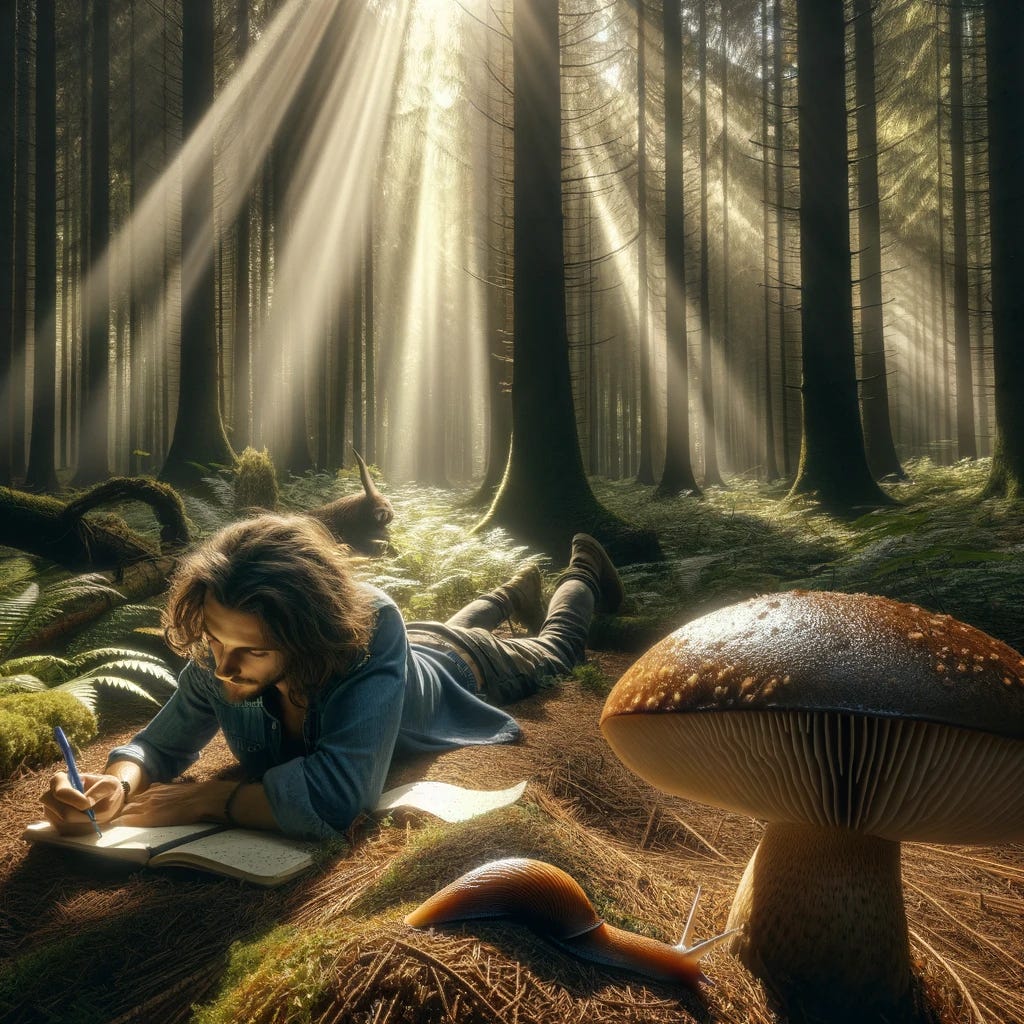
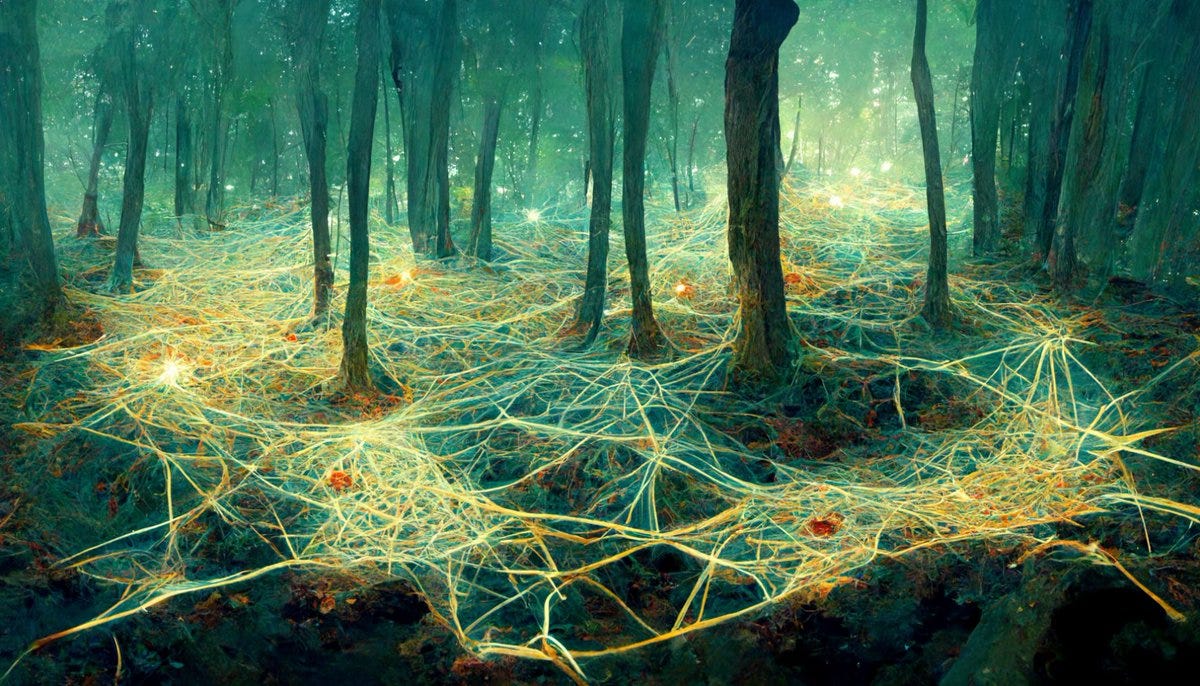
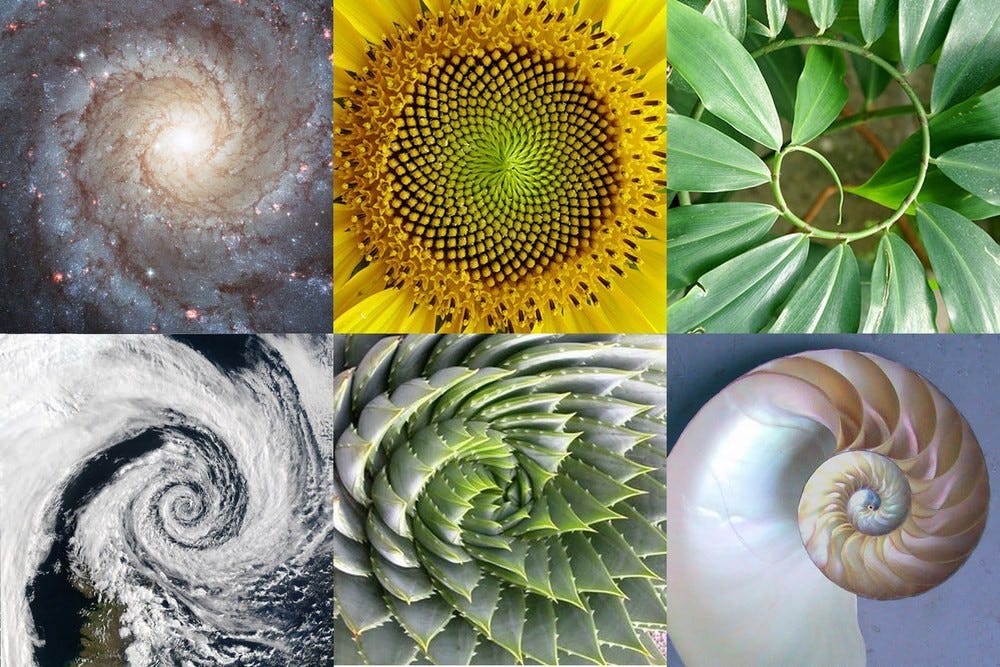
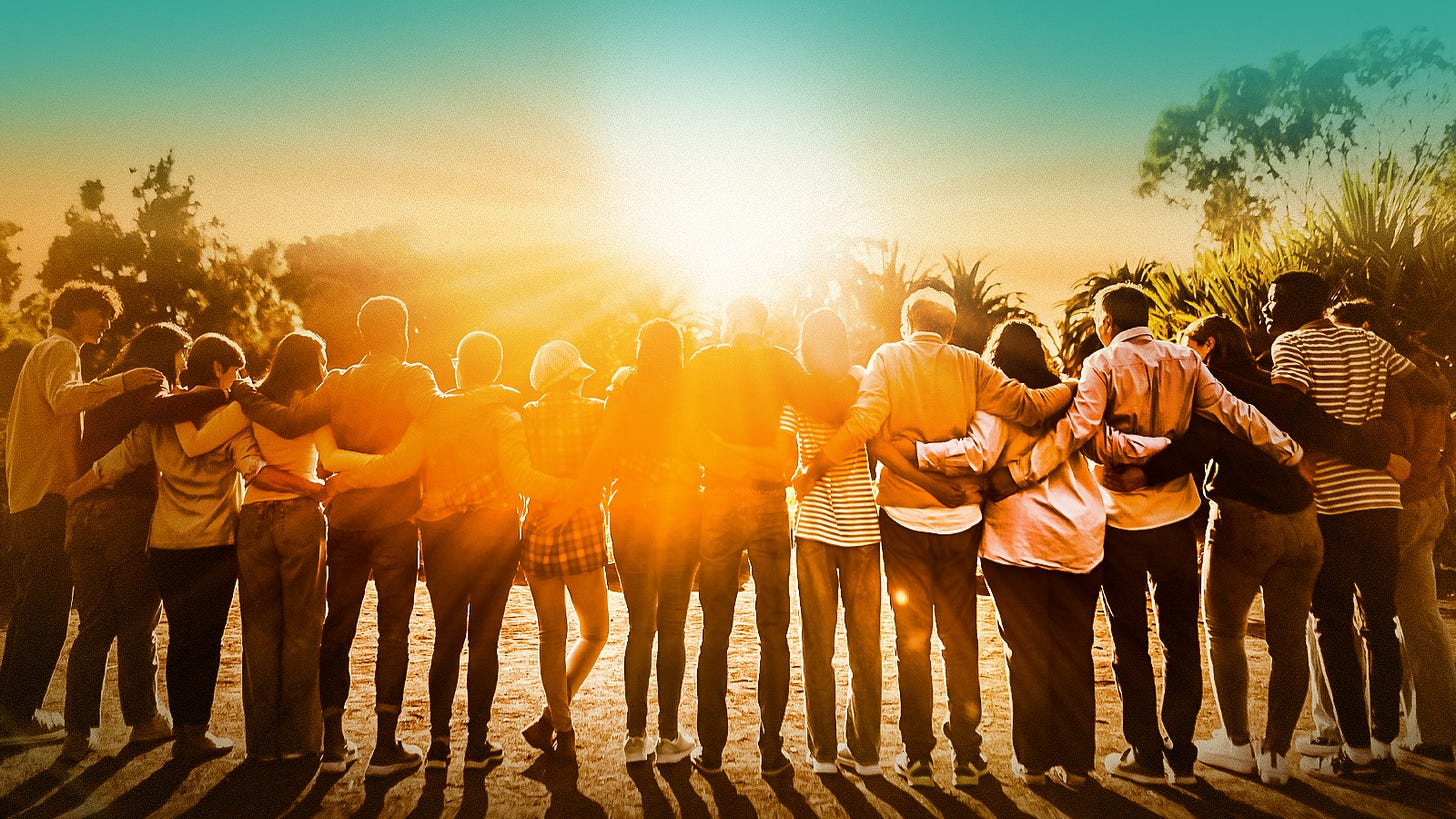
I note you credit one image to Chat GPT - but the other images are not credited nor titled. It would be good in the book to give credit where you can.
I also see this idea of separation and the mention of ego. Yet there is no explanation of this term ego - and only a little on how separation manifests. FOR me it would be good to explain this a bit more. For instance loneliness and being alone are 2 different things and I wonder about these kind of nuances with separation and ego. Are there places where they are useful? I struggle with the concept particularly of ego and how it manifests or is applied.